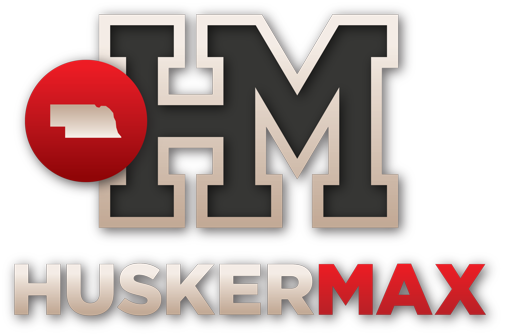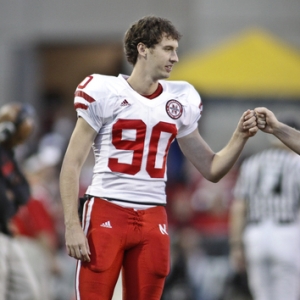The staff is moving towards a new standard in the trenches with height being the factor Husker fans seem to latch on and question. In other posts it was brought up that arm length was more important. The point seemed to be more about reach than arm length, but very similar topics. And others brought up being a better rock (we referred to them as anchors) at some positions is better than athleticism. The scope of this thread is to debate what is really important about linemen being effective.
In my experience I've always enjoyed unpredictable pools of talent, having to get teams put together without the benefit of recruiting nor 5 years with the same guys. (If I work with the same guys more than a year they really show it.) So I'm not going to pretend my solutions work everywhere.
The number one talent I like to identify is raw speed. I'm not wasting a giant that runs a 4.5 40 at nose tackle, even if he is the best nose on the team. I know in practicality a lineman that can get 4.5 is hard to come by. And I also know he's the most dangerous type to pursue from the backside on the defense, and is likely a threat to score on offense with speed like that. So I'm going to identify speed anomalies and put them in places where speed is crucial. I also identify the best vertical leapers, broadjumpers, hill/stair climbers, and box runners for other roles. Athletes need to fill niches.
The next factor I'm going to access is hand position by a player. The guy that can consistently win getting to, and consistently maintain, hand position tells me a lot about the ability to play linemen. Arm length can play a factor and having longer arms than an opponent can be an advantage. Being taller can definitely be an advantage here, too. But without hand position then height is a liability.
Hand position doesn't take a certain type of hand. Size of hand is nice at wide receiver for obvious reasons, but it is not a prerequisite for being a good lineman. It may be a good indicator of natural HGH levels in a guy, but it's not a handicap to have smaller hands. I personally have longer fingers and broader palms than most people, but never saw any correlation with hand size. I've been whipped by guys with big and small hands alike.
And I believe athleticism is too valuable to pass using it at specific niches. But an interesting point someone made elsewhere was about being a better rock was important at nose. You do need your unmovable types somewhere on the defense. I'm going to refer to this guy as the 'anchor', not to be confused with the anchor position*. The 3-4 can actually move this anchor around. The 3-4 can position into countless other defenses. One of those can resemble the Oklahoma 5-2 that used three interior linemen. One guy played anchor on a side and the other two shot gaps. Or maybe you run a 6-2 goal-line with one anchor nose and one penetrator to read QB for sneaks/draws. The point is, an anchor type doesn't have to play alone at the nose. Being an anchor is a niche talent so use the talent where it helps.
I do not want to undersell height. Leverage advantages from height can easily overcome strength on key situations. However, the height is more a factor after hand position effectiveness. Athleticism always trumps in ways that can be utilized as niches. But if you get beat by hand position, we cannot utilize things like height and athleticism.
I'd like to hear thoughts from others. Good, bad, ugly, indifferent. I'm open to debate.
In my experience I've always enjoyed unpredictable pools of talent, having to get teams put together without the benefit of recruiting nor 5 years with the same guys. (If I work with the same guys more than a year they really show it.) So I'm not going to pretend my solutions work everywhere.
The number one talent I like to identify is raw speed. I'm not wasting a giant that runs a 4.5 40 at nose tackle, even if he is the best nose on the team. I know in practicality a lineman that can get 4.5 is hard to come by. And I also know he's the most dangerous type to pursue from the backside on the defense, and is likely a threat to score on offense with speed like that. So I'm going to identify speed anomalies and put them in places where speed is crucial. I also identify the best vertical leapers, broadjumpers, hill/stair climbers, and box runners for other roles. Athletes need to fill niches.
The next factor I'm going to access is hand position by a player. The guy that can consistently win getting to, and consistently maintain, hand position tells me a lot about the ability to play linemen. Arm length can play a factor and having longer arms than an opponent can be an advantage. Being taller can definitely be an advantage here, too. But without hand position then height is a liability.
Hand position doesn't take a certain type of hand. Size of hand is nice at wide receiver for obvious reasons, but it is not a prerequisite for being a good lineman. It may be a good indicator of natural HGH levels in a guy, but it's not a handicap to have smaller hands. I personally have longer fingers and broader palms than most people, but never saw any correlation with hand size. I've been whipped by guys with big and small hands alike.
And I believe athleticism is too valuable to pass using it at specific niches. But an interesting point someone made elsewhere was about being a better rock was important at nose. You do need your unmovable types somewhere on the defense. I'm going to refer to this guy as the 'anchor', not to be confused with the anchor position*. The 3-4 can actually move this anchor around. The 3-4 can position into countless other defenses. One of those can resemble the Oklahoma 5-2 that used three interior linemen. One guy played anchor on a side and the other two shot gaps. Or maybe you run a 6-2 goal-line with one anchor nose and one penetrator to read QB for sneaks/draws. The point is, an anchor type doesn't have to play alone at the nose. Being an anchor is a niche talent so use the talent where it helps.
I do not want to undersell height. Leverage advantages from height can easily overcome strength on key situations. However, the height is more a factor after hand position effectiveness. Athleticism always trumps in ways that can be utilized as niches. But if you get beat by hand position, we cannot utilize things like height and athleticism.
I'd like to hear thoughts from others. Good, bad, ugly, indifferent. I'm open to debate.




